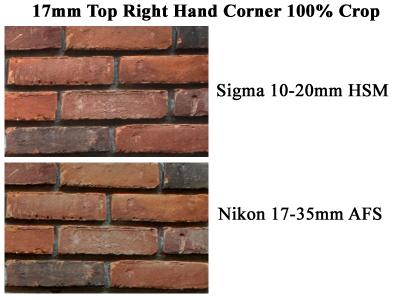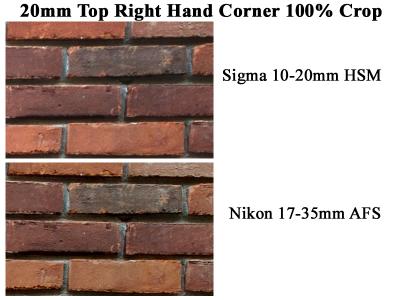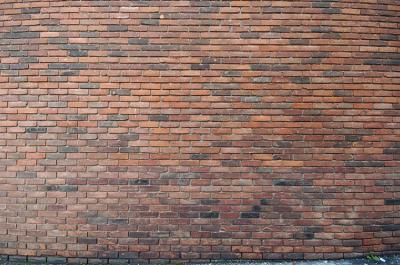





 |
 |
 |
 |
 |
 |
| Michael Ng | profile | all galleries >> Photo Gear & Reviews >> Sigma 10-20mm vs. Nikon 17-35mm Test | tree view | thumbnails | slideshow |
|
Distortion and Sharpness are amongst the more significant parameters by which a wide angle lens is judged. Here are my test shots, comparisons and findings.
A little bit about Distortion: Distortion is very much more an issue with wide angle lenses compared to telephotos because of the laws of physics. Getting a wider view than normal human vision requires more bending of light, and with more bending comes aberrations; both optical and chromatic. These aberrations can be corrected with aspherical lenses, but the capability of zooming adds another layer of complexity. The more common forms of distortion are the pincushion and barrel distortion. Pincushion distortion looks pretty much like a pincushion, in which the sides of the image are bent inwards. The shape of the distortion looks like a tin can that has had all the air in it sucked out. Barrel distortion on the other hand looks like itís named: a barrel. This is the opposite of the pincushion distortion where the sides of the image are bent outwards. The shape of this distortion looks like a tin can that has been expanded. Barrel distortion and pincushion distortion are fairly easy to correct because they are pretty regularly shaped. Software such as Adobe Photoshop provides such corrective capabilities. More complex distortions however may require more tedious manipulation. An example of such distortion is the moustache distortion, which looks like an upside down bicycle handlebar. The definitive and most popular test for distortion is the brick wall test. A simple brick wall is photographed with the sensor/film plate perfectly parallel to the wall. Because the brick walls are almost perfectly straight (hope you have a good bricklayer), any form of distortion can easily be identified. TESTS: Methodology: Both lenses were mounted on a D2H, which was attached to a tripod 4 meters away from the brick wall. All shots were taken at f/8, which should provide good optical performance for both lenses. To reduce the effects of vibrations from mirror slap, the cameraís mirror lock up function was employed. All shots were taken without any in-camera adjustments. The only post processing done was some slight levels adjustments to equalize the exposure of each image. Distortion: Both lenses display some amount of distortion at the 20mm end. Notice how the top and bottom corners of the images are slightly curved. The Nikon shows some barrel distortion, while the Sigma shows some amount of pincushion distortion. The distortion is only slightly visible and should not be objectionable when out shooting. At 17mm, as expected, the distortion becomes more apparent. Once again the Nikon displays some barrel distortion while the Sigma displays some pincushion distortion. Which one has more severe distortion? Itís hard to tell as they have different types of distortion, but both lenses are distorted by roughly the same amount. At 10mm, the Sigma is all alone here for apparent reasons. Interestingly enough, the distortion switches from pincushion distortion at the 20mm end to barrel distortion at the 10mm end. As expected, the distortion becomes very apparent. Some users have reported seeing the ďmoustache distortionĒ at this end of the lens. But what Iím seeing is rather uneven barrel distortion. The ends seem to distort rather abruptly when following the lines from the center to the outer edges of the picture. Sharpness: At 17mm, both lenses are pretty close in terms of sharpness. However the Nikon takes the cake by a slim margin. The Sigma has performed admirably well. At 20mm, the difference between the Nikon and the Sigma become more apparent. The Sigma is softer compared to its 17mm image, and even softer compared to the Nikon at the same focal length. Conclusions: The Sigma 10-20mm provides a breathtaking wide angle perspective for any digital SLR user. Amongst the ultra wide angle lenses in the market today, itís amongst the lenses with the least amount of distortion. As you can see, the amount is almost comparable to the venerable 17-35mm Nikkor at the 17-20mm range. However, the lens comes short in terms of sharpness when stacked against the much more expensive Nikon lens. A little Unsharp Mask may help better define lines in post processing, but it will not help bring back details lost by the lack of resolving power. The Sigma is not as sharp as the Nikon, but is that difference worth 3-times the price? You decide. |
 17mm RHC.jpg |
 20mm RHC.jpg |
 Nikon 17mm.jpg |
 Nikon 20mm.jpg |
 Sigma 10mm.jpg |
 Sigma 17mm.jpg |
 Sigma 20mm.jpg |
 DSC_4318.jpg |
| comment | share |
| countxerox | 11-Sep-2006 18:39 | |